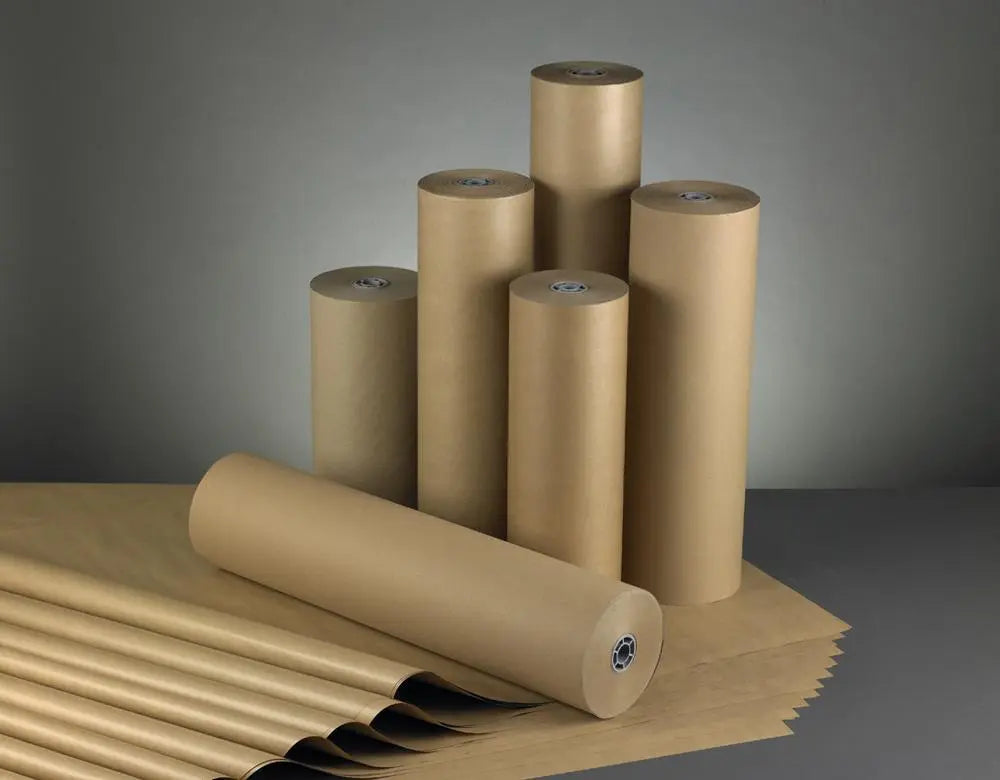
Understanding Different Types of Papers Used in the Production Process
Share
When it comes to the world of manufacturing and production, paper plays a significant role in the process. From creating patterns to guiding the cutting of fabrics, different types of paper are used at various stages of production. In this blog post, we will explore the different types of papers used in the manufacturing industry.
Designing Spot & Cross Paper is primarily used for making patterns for a variety of products such as garments, upholstery, car seat covers and many more. This is the first level of the production process and is mainly for sampling and creating master patterns. The paper has a grid of dots and crosses that help create accurate designs and patterns.
Pattern Card Paper is a thick paper, usually 270gsm, and is used for making patterns for a variety of products such as garments or upholstery. Once these patterns are correct, they can then be kept as original masters, and used for marking out the various components of the garment or furniture, to then be sent for manufacturing.
Brown Kraft paper is a versatile paper that is made from the pulp of softwood trees, and it is known for its strength and durability. It is an eco-friendly option that is often used for packaging and wrapping materials due to its natural, rustic appearance. it is a great alternative to pattern card paper for making patterns in the garment and upholstery industries. Brown Kraft paper is lightweight and flexible, making it easy to manipulate and cut into different shapes and sizes. It is also relatively inexpensive compared to other types of pattern paper, making it a popular choice among designers and manufacturers. In addition to its industrial applications, brown Kraft paper is also commonly used for gift wrapping, as it provides a natural, minimalist look that is perfect for a variety of occasions. It can also be used by florists to wrap bouquets and other floral arrangements, as it is strong enough to hold the weight of the flowers and adds a rustic touch to the presentation. Finally, brown Kraft paper can also be used as void fill in packaging, as it is an eco-friendly alternative to traditional plastic bubble wrap.
Heatseal Spot & Cross Marking Paper:
Heatseal Spot & Cross Marking Paper is used to guide the user when cutting the fabric for whatever they are producing, after which the fabric cuttings are sent to be stitched together. "Heatseal" is the term used for a heat-activated glue on the reverse side of the paper. Once heat is applied from an iron, the glue will stick the paper to the fabric, without leaving any residue. This ensures that the fabric can be cut accurately without any mistakes or discrepancies.
Heatseal Plotter Paper has the same application as Heatseal Spot & Cross Marking Paper, but instead of having to use patterns to draw the markings by hand, you use software to map out the markings and print them out directly onto the paper.
Plain Plotter Paper is the same as Heatseal Plotter Paper but without the glue. It is used in a similar way to Designing Spot & Cross Paper for sampling and initial designs, but with the use of software rather than by hand.
Multicopy Heatseal Paper is used with Heatseal Marking Paper for carbonless copying (NCR – no carbon required) if you do not have a plotter printing machine. For duplicate markers, you can use up to 4 layers of this paper with the original being the markings done on the Heatseal Marking Paper, totalling 5 copies.
Eclipse Underlay Paper is used at the bottom of the fabric lays and is there to help move the fabric down the table without pulling the fabric, possibly stretching or ripping it. It also help getting clean cuts at the bottom ply’s of the fabric.
Perforated or Spiked Underlay Paper:
Perforated or Spiked Underlay Paper is used with an automatic cutting machine for the fabric to be cut by the machine using computer software. The perforation holes are placed under the fabric to help the machine pull the fabric down with air suction so it doesn’t move while it is being cut.
HD Vacuum Polythene Film is used with the Perforated Underlay Paper on automatic cutting machines but is placed on top of the fabric to help complete the vacuum, so that the fabric is held down firmly, before the fabric is cut.
Interleaving Separation Tissue Paper:
Interleaving Separation Tissue Paper is used during laying fabrics to split the lays between batches, styles, or colours and does not interfere with the cutting machine's ability.
In conclusion, different types of paper play a significant role in the manufacturing industry. Each type of paper has its own specific use and function, contributing to the accuracy and precision of the production process. By understanding the different types of paper used in manufacturing, one can appreciate the complexity and detail that goes into creating the products we use every day.
If you have any questions about any of the products listed above, need any information regarding their applications, or need information on any of our other products, please contact us, and one of our team members will be more than happy to assist you!
